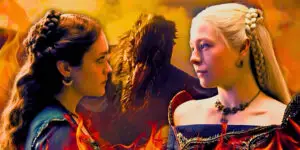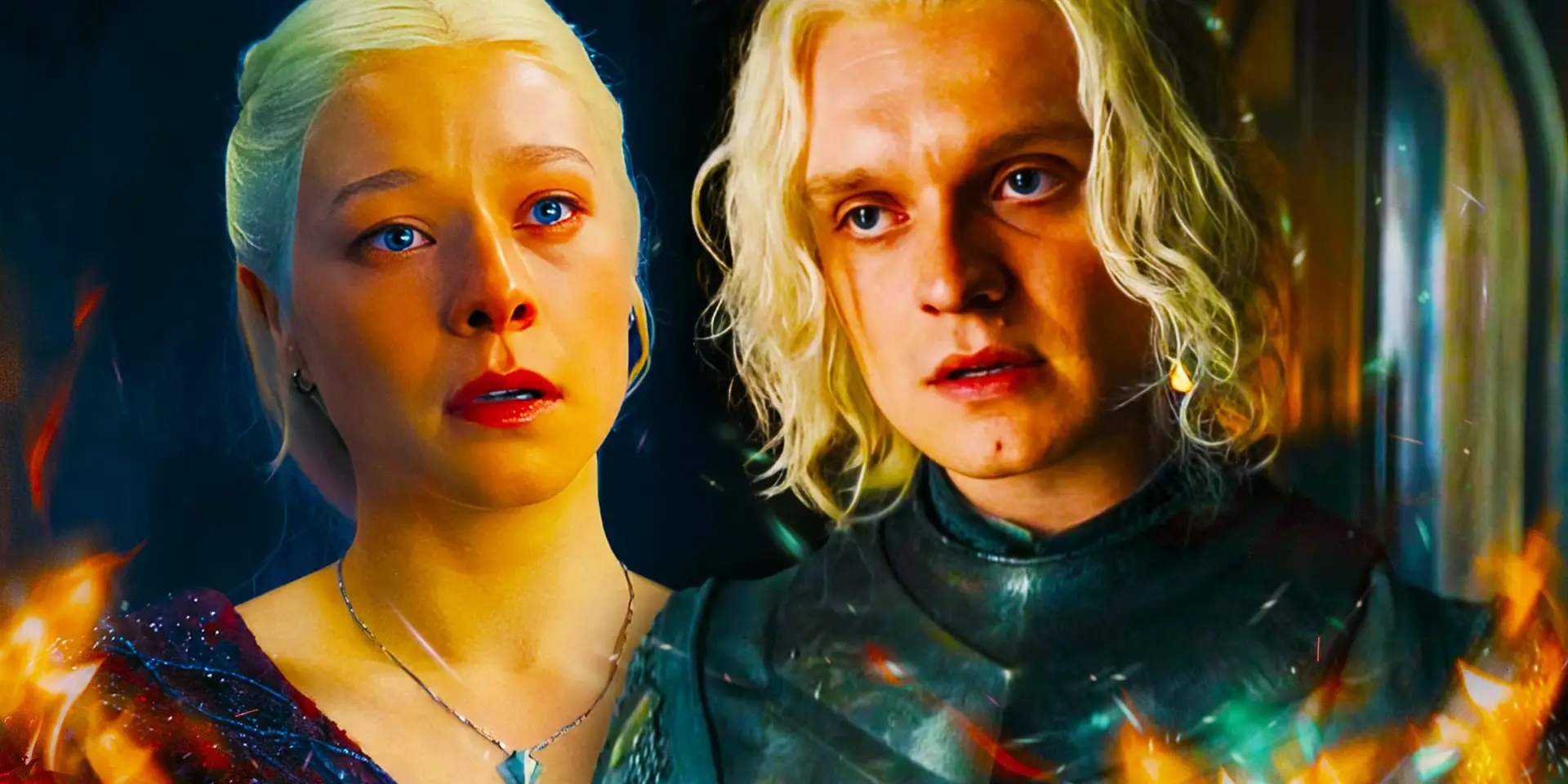“House of the Dragon: Understanding the Complex Outcome of the Targaryen Civil War”

As the bells toll in Westeros, marking an ending, or a beginning depending on which side of the throne you’re favoring, one can’t help reflecting on the unholy Targaryen Civil War and its tangled web. Tagged as the Dance of the Dragons, this historical dance-off, choreographed with power moves and shockingly poor decision-making, climaxed into an event that rewrote Westeros’ destiny.
The battleground: the iron throne. The contenders: Aegon II – backed by Alicent Hightower and her father, fighting for the Greens, and Rhaenyra, bolstered by her not-so-distant relation (read: uncle/husband) Daemon Targaryen, waving the flag for the Blacks. The stakes: beyond high, if we’re being modest.
Enter the HBO series House of the Dragon, bringing this high-stakes five-step to the small screen and casting a spotlight onto George R.R. Martin’s Fire & Blood backstory that details the meteoric highs and tectonic lows of House Targaryen in Westeros. Infused with enough unreliable narrators and open-ended puzzles to make an Agatha Christie novel blush, the history woven is as intricate as it is captivating.
As House of the Dragon takes off – with King Viserys Targaryen’s coronation as the starting point – we’re treated to a rotating cast, each playing out their dance steps against the pulsating beat of the simmering conflict. A conflict that sways with Rhaenyra’s contested claims to the throne, culminating ultimately into the full-blown war between the Greens and the Blacks.
While friendships are described as sacrosanct, the bond between once besties Princess Rhaenyra and Alicent Hightower calcified when King Viserys Targaryen set his sights on Alicent as his future queen. The relationship continued to sour as Otto Hightower’s whispers began to echo in the royal court, and Alicent’s ambitions were inflamed for her firstborn son, Aegon II.
With the Hightower green dress of Queen Alicent fluttering against Rhaenyra’s Targaryens hues of black and red, family Minecraft nights quickly spiraled into a contest of Greens versus Blacks. With Rhaenyra’s second marriage, this time to Daemon Targaryen, following her flight of fancy with Ser Laenor Velaryon, the clash of royals gained momentum and erupted into a struggle for the throne after the untimely death of Viserys.
Queen Alicent’s faction, we must add, was quite the ensemble. Backed by her father, Ser Otto Hightower, her children from her marriage with Viserys Targaryen – Aegon, Aemond, Helaena, and Daeron – and supported by a handful of Westeros’ most affluent houses, the Greens staunchly opposed the idea of a woman ruling the Seven Kingdoms, unless, of course, the woman in question was Alicent herself.
Rhaenyra’s Black faction stood tall with Prince Daemon, Sea Snake Lord Corlys Velaryon, Rhaenys Targaryen, Dragonstone’s queen that wasn’t, and her offspring from both her marriages. In this power struggle, they held key leverage, thanks to the Dragonstones providing air support in the form of dragons and dragonriders. And yet, the Greens held their ground with the Royal Treasury and all of King’s Landing, including the coveted Iron Throne.
Not for the fainthearted, the war saw the brutal demise of nearly all Targaryen dragons, major players such as Prince Daemon and Queen Rhaenyra, and numerous others. Aegon II broke the will of the Blacks when he dispatched Rhaenyra in a rather macabre way – introducing her to the gastric juices of his dragon, Sunfyre. However, it was a pyrrhic victory at best. Though Rhaenyra had already claimed the Iron Throne on the king’s passing, her reign was short-lived as Westeros was drowning in unrest and chaos.
As Rhaenyra was drawn to her brutish end in a trap formulated by Aegon, the crippled king was dealt a fatal blow from his own council who served him a poisonous cocktail, literally. Having lost the king but not the resolve, the crown passed to the only undisputed leader of Westeros left – Rhaenyra and Daemon’s son, the 10-year-old Aegon III.
Shaped by the bone-shattering weight of the war, saddled with the loss of his loved ones and haunted by the sight of his mother’s life taken gruesomely, Aegon III’s reign had Fortuna’s favor but lacked the needed fortune. As fortune would have it, the dance ceased with the remains of Rhaenyra’s bloodline standing tall. Every descendant of Alicent perished in the war, leaving the Iron Throne to Aegon III and his sibling, Viserys II.
With the reigns of Westeros in hands both young and royal, Aegon III’s rule saw monikers such as “the Broken King”, “Aegon the Unlucky”, and the ironical “the Dragonbane”, accompanied by the demise of the last Targaryen dragon, etched into the annals of history. Aegon’s life danced its last waltz at age 36, yet the legacy of the Targaryens lived on through his progeny and brother.
The Dance of the Dragons was nothing short of disastrous, most prominently for the Targaryen dynasty, and the Westeros dance floor was littered with the remains of dragons, forever changing the balance of power. The civil war that embedded great fear and respect for dragons into the hearts of common folk now bare a devastating impact on the once mighty Targaryens during Robert Baratheon’s revolution. Irony, it seems, has a disillusioned sense of humor.
The House of the Dragon series has spun this tale with personal flair, bringing characters back from history’s abyss and fading others into oblivion while playing up the uncertainty of the narrators in Fire & Blood, in true HBO style. The Dance of the Dragons, as told by House of the Dragon, transformed from a power struggle between Aegon II and Rhaenyra to a tale of two best friends turned foes by the tricks of fate.
Writer: ATC-
#comics #comicbooks #graphicnovel #graphicnovels #augusttales
Image credit: screenrant.com


